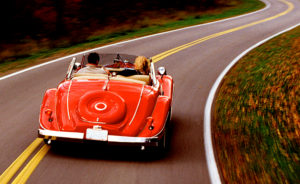 As new California drivers get experience behind the wheel, they tend to forget some of the basics of safe driving. Although drivers learn safe driving practices and must use them to pass their driving test, some routine aspects of driving are forgotten with time. Keep yourself and other drivers safe on California’s roadways by remembering these basic but important rules.
As new California drivers get experience behind the wheel, they tend to forget some of the basics of safe driving. Although drivers learn safe driving practices and must use them to pass their driving test, some routine aspects of driving are forgotten with time. Keep yourself and other drivers safe on California’s roadways by remembering these basic but important rules.Your turn signals are important for communicating your intentions to other drivers, bicyclists and pedestrians, so be sure to use them. Always signal when turning, changing lanes, pulling away from a curb or moving toward a curb to park. Remember to signal about 100 feet before turning. If your turn is just after an intersection, turn your signal on when in the intersection rather than when approaching it so those behind you don’t think you will be turning at the intersection. Remember, too, that you can use hand signals if you are on a bicycle or feel other drivers may not see your turn signal for any reason.
Steering
Proper steering is important for keeping control of your vehicle and for keeping you safe. Keep your hands at 9 and 3 o’clock or at 9 and 4 o’ clock. Keeping your hands in one if these positions when turning will prevent you from doing so too sharply. Keeping your hands on the bottom half of the wheel also reduces your risk of hand and wrist injuries in the event of an accident. It is best to avoid hand-over-hand steering unless you are parking or taking an extremely sharp right turn. It is also best to keep both hands on the wheel, removing one only when you need it to operate vehicle controls such as the windshield wipers or defrost controls.
Although these are simple tips, it’s easy to get lazy when driving starts to feel more natural and comfortable. Remind yourself and your young drivers that these practices, though basic, are important safety maneuvers that should always be art of their drive.